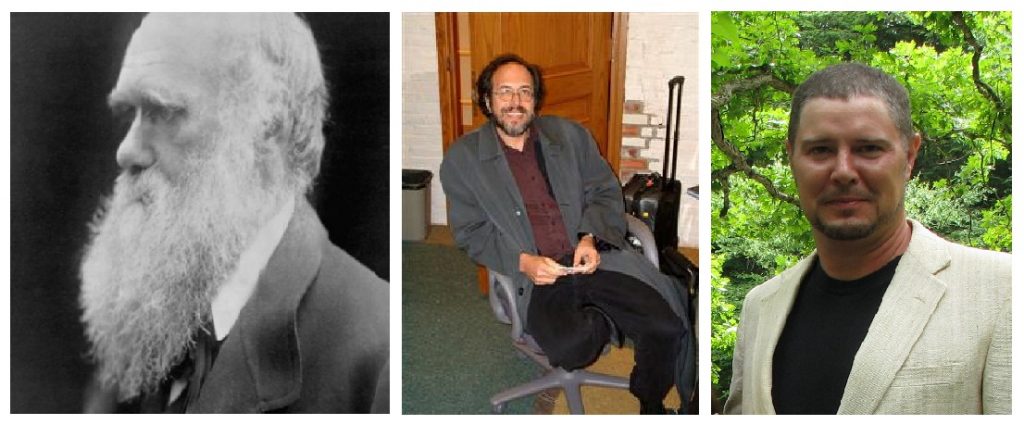Darwin understood that natural selection is best summarized, quite simply, as survival of the fittest. Although largely unspoken, this short phraseology captures the fact that elimination occurs as well. It explains—in one fail swoop—survival of the fittest, elimination of the weak, and the cumulative effects that they together lead to over time. After the publication of The Origin of Species, Darwin even had some regrets, wishing he had called natural selection ‘natural preservation’ instead.1 He well understood that selection means ordinary preservation and that the simple act of preservation is also a mechanism. Darwin saw that selection is both means and ends, as it is both the primary device and the primary, short-term objective in all of life’s evolution.
As successful as Darwin’s theory is, however, scientists are now finding that survival of the fittest applies well beyond the realm of biology. From Wojciech Zurek’s discovery of einselection in quantum physics to Julius Rebek’s discovery of chemical selection and more, selection explains a great deal from particles to man. What’s been missing, then, is an accurate definition of selection that includes these non-biological systems. What’s needed is a definition that explains more than just the survival of the fittest genes, species, and adaptations—an understanding of exactly what selection is not only in biology but in physics at large.
Fortunately, those in the field of Universal Darwinism have recently defined selection as ‘preservation of the stable’ (Kelley 2013).2 No different from survival of the fittest at its core, it is a deterministic mechanism that is accompanied by elimination of the weak. It thus explains the cumulative preservation and elimination of systems in general. Because all natural phenomena involve systems at their true foundations in physics, selection involves the preservation of stable systematic behavior—much as it does among species themselves. In fact, this is the true basis for all things—even living things—as selection ultimately operates upon systems even in biology.
“What’s needed is a definition that explains more than just the survival of the fittest genes, species, and adaptations—an understanding of exactly what selection is not only in biology but in physics at large.”
According to Universal Darwinism, species therefore aren’t the only things that are adaptive in nature. Adaptive systems exist at every level from small-scale systems to large (Smolin 1999).3 From particles to molecules, for example, every time a new property arises, a new capability arises, allowing phenomena to endure new conditions and circumstances. Consequently, adaptation to new environmental conditions happens in everything from quantum physics to chemistry, biology and more as new properties forever unfold.
For those concerned about information retention, like genes, it is now well documented in physics that everything is ultimately information at its core (Ford 2003).4 Every time a new property arises among particles, atoms, molecules, etc., new information arises as well. Moreover, it has been shown that information—even outside of biology—can be both conserved and even transformed (Carroll 2016).5 Like species, then, everything contains information at its foundations, and it too—as it is argued—is both conserved and transformed via selection itself (Campbell 2011).6
“It has been shown that information—even outside of biology—can be both conserved and even transformed.”
With regard to competition among nonbiological systems, all systems are in contention with others, just like species. From particles to entire galaxies, all phenomena interact, collide, and even destroy one another. Competition is therefore prevalent among them, leading to both preservation of the stable and elimination of the weak throughout all of science.
To then address the bigger picture at hand, Universal Darwinism claims that selection applies universally among all things big and small. While Darwin defined this principle as “the preservation of favored races in the struggle for life” (1859),7 we here find it to involve “the preservation of favored systems in contention for existence” (Kelley 2013). Instead of species, it is ultimately systems that evolve. In other words, it is stable systematic behavior in a dynamic universe that is ultimately selected. It should thus be apparent that the Darwinian interpretation of selection doesn’t define this process at its proper core in physics. Selection includes much more than just the preservation of stable genes, races and so on. It involves the preservation of the most stable systems in general, and history itself would appear to have proven this time and time again in both life and the universe at large.
References:
[1] Letter to Charles Lyell, September 28, 1860
[2] Kelley, D. B. (2013), The Origin of Everything via Universal Selection, or the Preservation of Favored Systems in Contention for Existence, Woodhollow Press.
[3] Smolin, Lee, (1997), The Life of the Cosmos, Oxford University Press.
[4] Ford, Kenneth (2010), John Archibald Wheeler: Doer and Visionary
[5] Carroll, Sean (2016), The Big Picture: On the Origins of Life, Meaning, and the Universe Itself
[6] Campbell, John (2011), Universal Darwinism: the path of knowledge, CreateSpace.
[7] Darwin, Charles (1859), On The Origin of Species by Means of Natural Selection, or the Preservation of Favored Races in the Struggle for Life, Full Title, John Murray.
